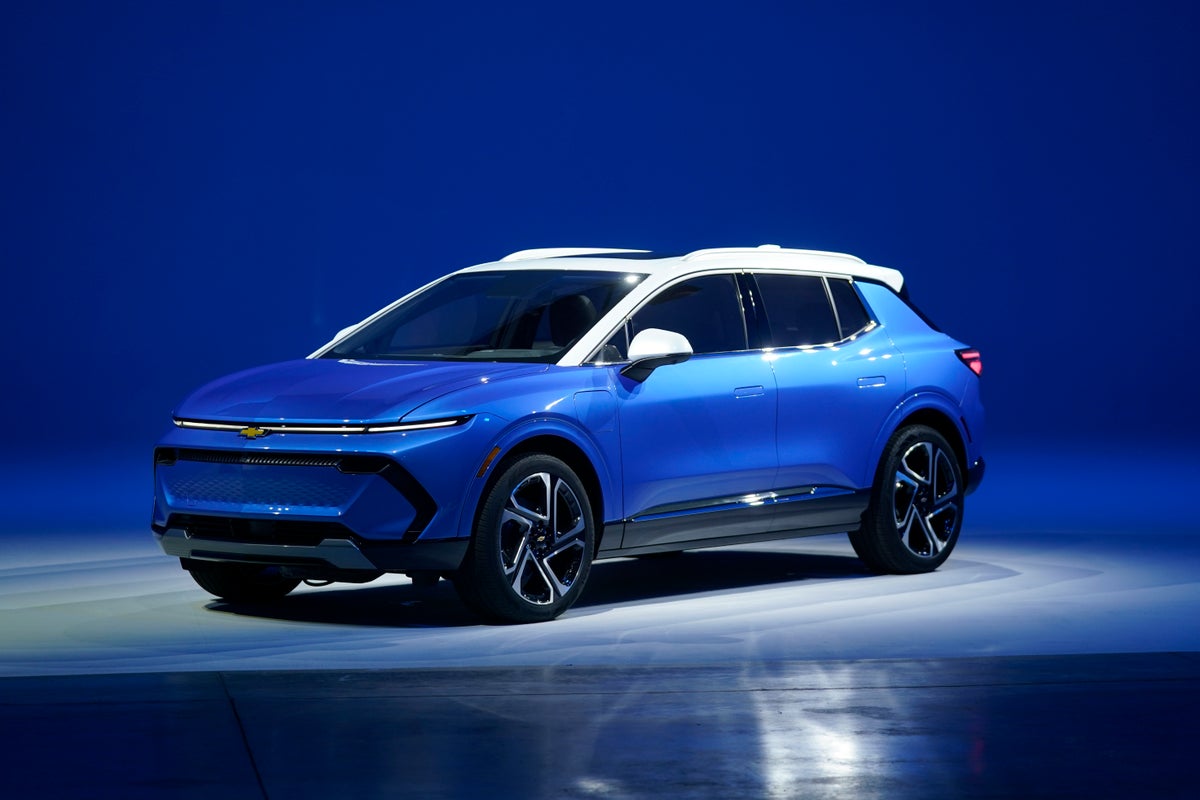
EDITORS/NEWS DIRECTORS:
The Biden administration has now approved plans from all 50 states, the District of Columbia and Puerto Rico that detail how those locations will roll out their part of an ambitious electric vehicle charging network along highways.
The approval means $1.5 billion in National Electric Vehicle Infrastructure funding — $5 billion over five years — will start flowing to states under President Joe Biden’s huge infrastructure law to create a national fast-charging network for electric vehicles. Building out a reliable and convenient network is critical to spur more adoption of the technology, which is itself key to reducing greenhouse emissions that cause global warming.
Federal approval of plans for a last set of 17 states came Tuesday, following the approval for 33 states, the District of Columbia and Puerto Rico earlier this month.
In practical terms, it means residents in some of those states could start seeing shiny new expansions and upgrades to their existing highway EV charging stations by year's end. Construction of newly located EV charging stations could happen by next spring. Biden has a goal of ultimately installing 500,000 chargers across America and building a network of fast-charging stations across 75,000 miles (120,000 kilometers) of freeways from coast to coast.
Experts say the federal dollars should kickstart more involvement from the private sector to fill in the gaps for EV charging across the U.S. Last year, electric cars were about 5% of new vehicle sales in the U.S. and made up about 0.9% of all vehicles in the nation.
Here are some tips and resources for localizing the story. Pair them with this from AP: States get final OK to build highway EV charging network
WHICH STATES HAD THEIR PLANS APPROVED TUESDAY?
Alabama
Alaska
Hawaii
Idaho
Illinois
Iowa
Indiana
Missouri
New Jersey
New York
North Carolina
South Carolina
Texas
Vermont
Virginia
West Virginia
Wyoming
WHERE CAN I FIND ALL THE STATE PLANS?
You can find each state’s plans and the approval letters here. Most plans include a map that shows which major freeways are designated to receive chargers. Here, for example, is the plan from Oregon, which includes a map on Page 3 showing where charging stations currently exist on freeways and where they will be added over the next five years.
The list can also be viewed as a map here.
___
HOW MUCH MONEY DID MY STATE GET?
The funding is over five years. You can find a list of the dollar amounts expected by each state here, as well as a breakdown of when that money will arrive.
___
ARE THERE ANY LIMITATIONS ON HOW THE MONEY CAN BE USED?
This funding is specifically for installing the most powerful chargers along major freeways that connect states. The goal of the National Electric Vehicle Infrastructure (NEVI) program is to eliminate concerns about running out of power in the middle of a long trip — a worry that currently keeps many people from purchasing electric vehicles or using them on long road trips.
Under proposed guidelines, states would be required to install at least one four-port fast-charging station every 50 miles on these corridors and ensure they are within one mile of an off-ramp to address that issue.
___
ARE THERE ANY CONCERNS FROM THE STATES OVER HOW THE MONEY WILL BE SPENT?
Yes. A number of states with larger rural areas have raised concerns about proposed guidelines that would require a charging station every 50 miles. These states say there isn’t the electric infrastructure or demand to support stations in some areas. These states were allowed to ask for exceptions as part of their plan and many were granted by the Biden administration with a one-year window.
You can find PDFs of written public comments from state Department of Transportation officials in your state by searching for your state’s name and then the phrase “Department of Transportation” here.
___
WHAT ABOUT ELECTRIC VEHICLE CHARGING NETWORKS THAT AREN’T ON HIGHWAYS?
An additional $2.5 billion in discretionary grants is available to fund electric vehicle charging infrastructure in economically disadvantaged communities, rural areas and urban cores. The Transportation Department said Tuesday they expect to begin accepting applications for that money later this year. And Biden’s recently passed Inflation Reduction Act includes $3 billion to spur electric vehicle adoption and charging accessibility in disadvantaged communities.
Industry analysts and state and local officials say the private sector and public-private partnerships will also be crucial in deploying a sufficient EV charging network as more states transition away from gas-powered vehicles.
___
QUESTIONS FOR YOUR STATE OFFICIALS (some of these answers may be readily available by reading the plans ):
— How much demand do you anticipate for a fast-charging freeway network in your state?
— How many fast-charging stations currently exist along alternative fuel corridors in your state? Do they all meet the NEVI specifications or do they need to be upgraded?
— What concerns do you have in your state about the feasibility and/or cost associated with installing fast-charging EV stations in rural areas? Did you ask for any exemptions in your plan submission? Were those granted?
— Do you plan to apply for the additional competitive grants to boost EV charging station accessibility in urban areas and in disadvantaged communities? If so, how much will you seek and for which potential projects?
— Do all areas of your state have the electric infrastructure to support a build-out of the fast-charging EV station network? What are your state’s utilities doing, if anything, to facilitate the transition to electric?







